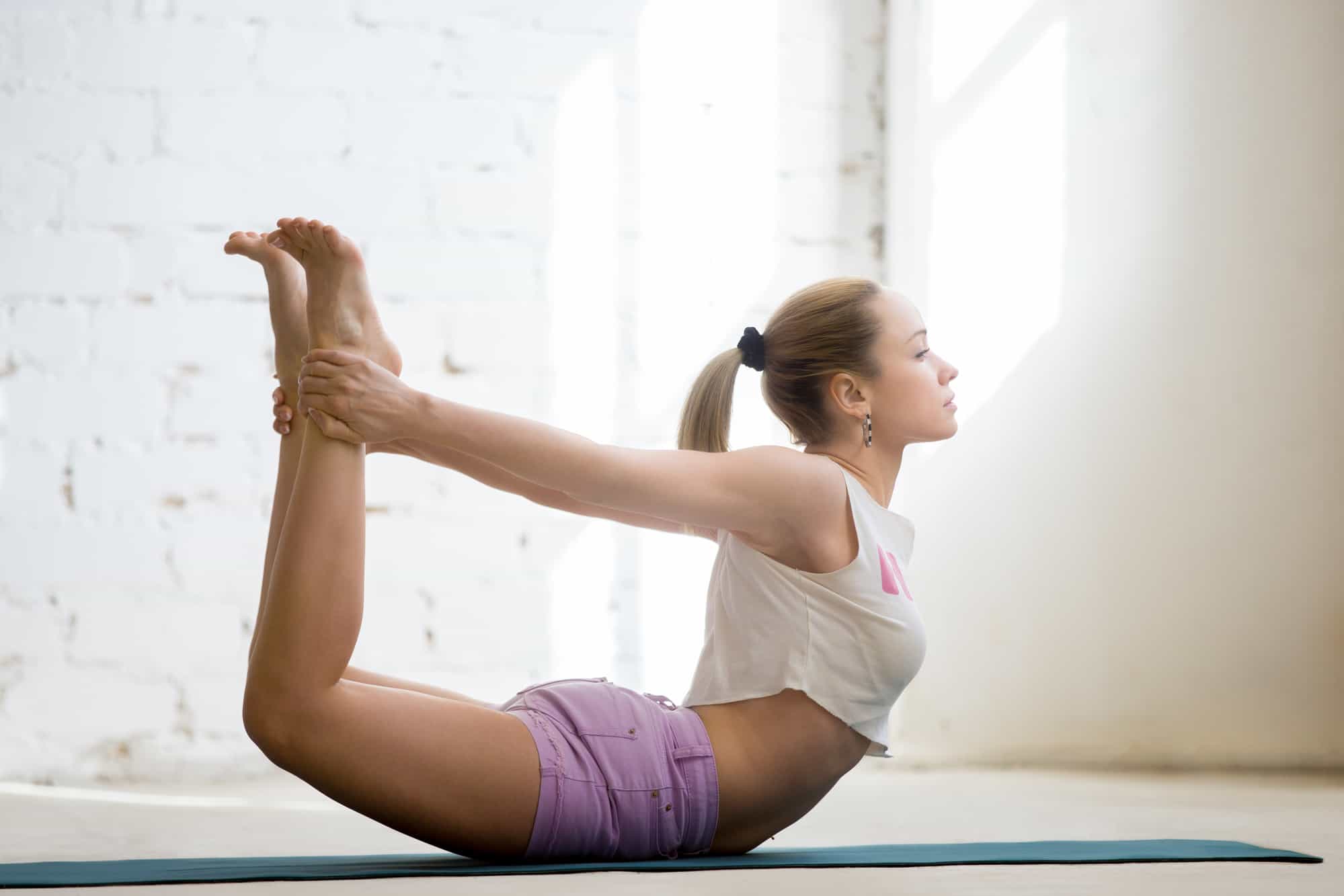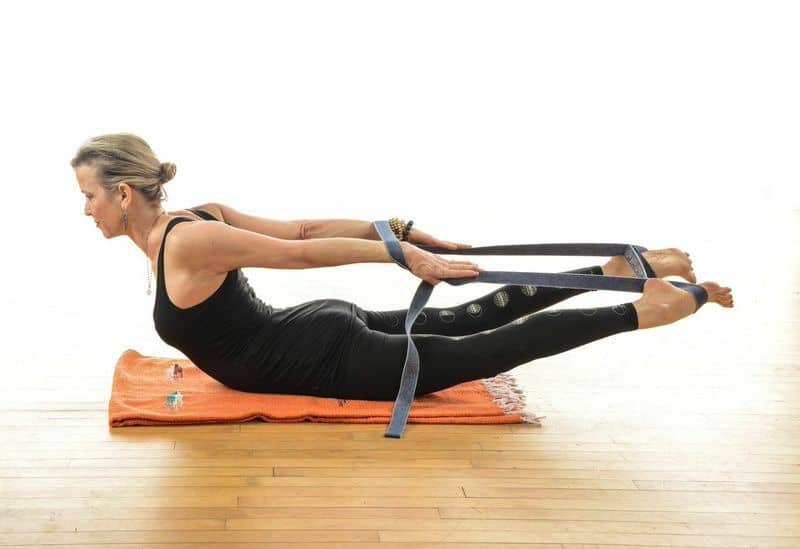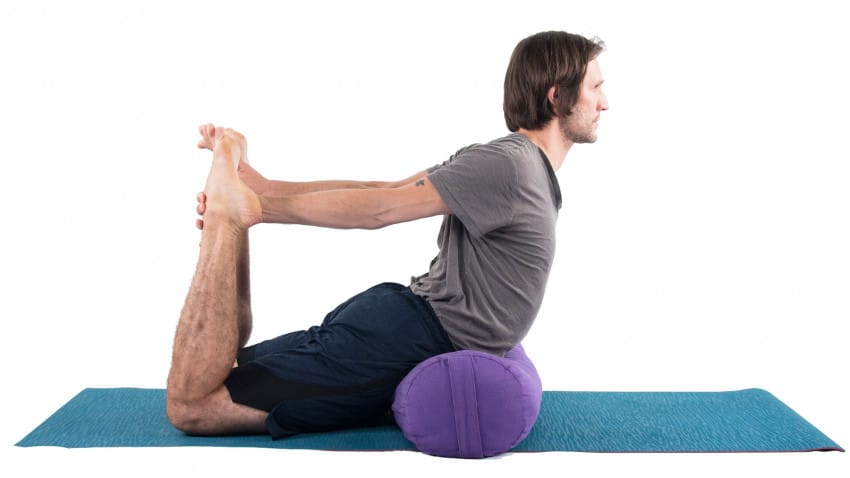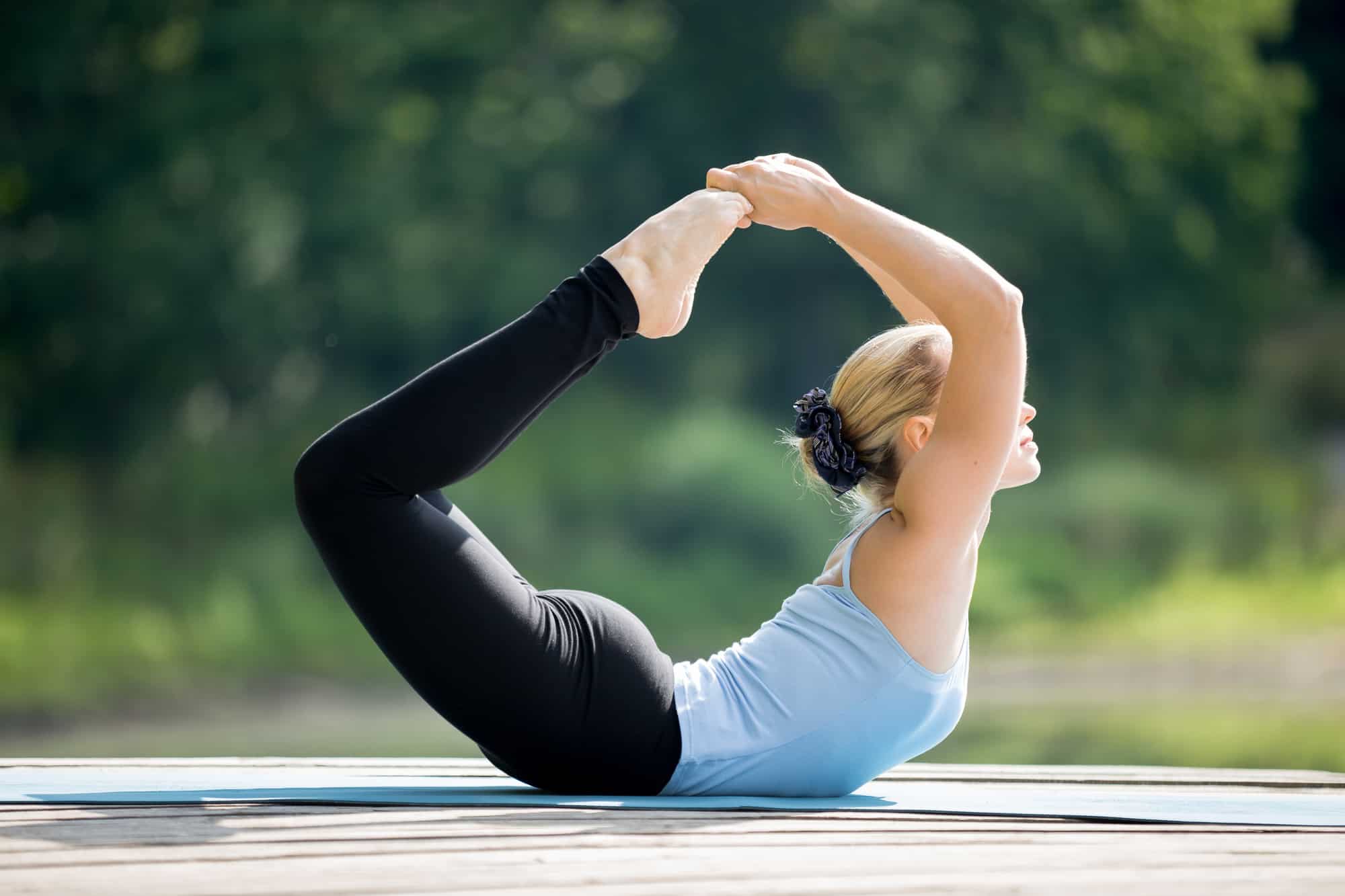
धनुरासन
Dhanurāsana: dhanur=bow
Being a backbend Bow pose remains a full-body activity. So if you are a whole-day sitter, try this to release the tension in the back and feel energized after your practice.
How to Get Into It
Start in a prone position.
Before you go into the Bow shape, ensure your lower back is in a neutral position (You may also put a folded blanket or towel under your pelvis). It’s better to do this pose step by step to get the correct alignment and prevent lower back pain.
As you inhale, lift your head and hands (squeeze the shoulder blades and keep elbows up above the floor). Next, lift upper ribs and finally chest off the floor. You can perform the lift gradually, lifting head and hands during one inhalation, and then on the next inhalation – lift ribs and chest. Alternatively, you can do it all during one inhalation.
On the next inhalation, bend your knees and lift your legs too. Keep the legs engaged, and toes pointed. Following, engage your upper back and keep pulling shoulder blades together. You can stay here for several breaths and then proceed to the next stage, or practice this option for some time until your muscles grow more strength.
Next, grab the outer sides of your ankles with your hands (palms facing inwards). Try to keep ankles closer to each other if possible.
In the following stage, activate your legs and start pushing them behind you. With this move, you stabilize the pelvis and feel the tension in the chest and upper body. Your body will resemble a bow.
Try to push your legs a bit up to create more tension and open shoulders and heart area. Also, you’ll feel the stretch in your abdominals, so try to relax that area.
Hold the position for 3-5 breath cycles and, on an exhale, slowly let go of the leg and lay down in the prone position.
Benefits
- It helps to release the tension and fatigue caused by prolonged sitting and improves posture
- Gives an excellent stretch for the front body and abdominals
- Improves digestion
- Makes your upper back muscles stronger for better support of the spine
- Nice stretch for hip flexors and quads
- Practicing this pose makes your buttocks really well-shaped
Precautions
Quite evident that pregnant women should bypass doing this pose.
If you’ve got abdominal surgery, also avoid this pose, not to stretch your belly muscles.
All kinds of wrists, lower back, disk issues can be a contraindication for this pose. So in such cases, please do see your doctor and ask his recommendations before you do the Bow pose.
Modifications
Beginner: Use a strap to help your reach your ankles.

Alternatively, lift your thighs by putting a folded towel under them. As the flexibility and strength grow, you can put those props aside.

Advanced: After performing more accessible options, you may be up for some challenges in a Bow pose.
There are two modifications:
1. Instead of ankles, grab your big toes and lift. That will create a deeper stretch for you.

2. Try holding legs pressed closely to each other: your thighs, ankles, knees should be in touch as much as possible. With such engagement of the legs, your upper body will have to open up more.
Common Mistakes
Holding breath
It’s a common mistake to hold your breath in a backbend. So be attentive to the way you breathe through the practice of Bow pose. It’s better to take a few deep full breaths while holding this form than to hold it without breathing.
Proper knees’ position
Spreading your legs too wide or keeping them too close to each other affects how hips are opening in the Bow pose. The best alignment for the knees in this pose is hip-width.
Try to check visually or sensory the position of your knees. If they are placed with the wrong width, this may lead to pain and strain in the lower back.
Shoulder rotation
Shoulder mobility adds a lot to the possibility of reaching your ankles with your arms. As Bow pose gives a good stretch for the shoulder girdle, the position of the shoulder joints means a lot. So give it a moment to rotate the shoulder slowly and only after that go for the chest lift.